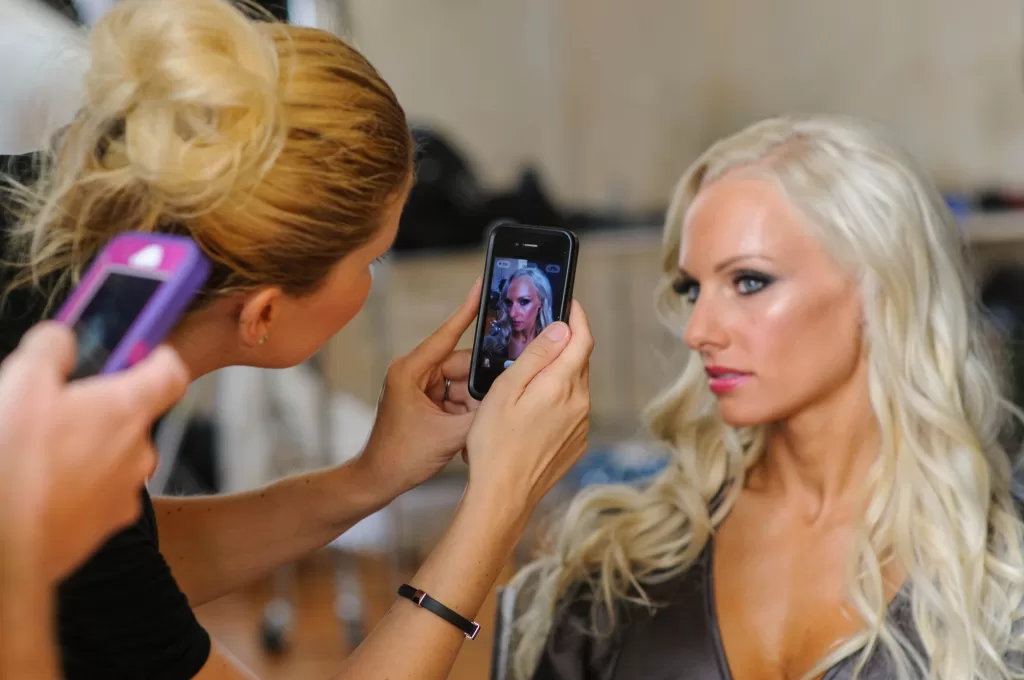Every photographer has been there. You deliver what you think are fantastic images that perfectly capture your style, only to have the client complain they look “too moody” or “not bright enough” or demand you make them “look more like Instagram.” The Artistic Clause in your photography contract can save you from these headaches.
Professional photographers constantly balance creative vision with client expectations while protecting their business interests. The Artistic Clause addresses this challenge by establishing clear boundaries around creative control and setting realistic expectations for final deliverables. Proper contract provisions make the difference between smooth client relationships and costly disputes.
This becomes particularly relevant in today’s social media landscape, where photography disputes can quickly become public relations nightmares. Recent high-profile cases have emerged where brides have taken to social platforms to criticize their wedding photographers’ work. In one widely-discussed case reported by PetaPixel, a bride complained about her photographer’s “sepia-toned” editing style, claiming the photos made her look “pale” and “dull” despite having initially loved them for 30 days. The situation escalated when she demanded all RAW files to re-edit herself, leading to public disputes about artistic control and contract terms. And even more recently via USA Today a somewhat similar story.
These situations highlight why the Artistic Clause matters across all photography genres. While wedding photography gets the most social media attention, similar disputes arise in commercial, fashion, lifestyle, and portrait work where clients hire photographers for their distinctive style then later object to that same artistic approach.

What an Artistic Clause Actually Does
An Artistic Clause is contract language that acknowledges your unique style and grants you specific creative control over image capture and editing. Think of it as establishing that clients are hiring you for your artistic perspective and decision-making abilities, not just technical button-pushing.
The clause typically includes three key elements. First, it acknowledges that the client has reviewed your portfolio and understands your style. This becomes crucial if disputes arise about aesthetic choices, as it demonstrates the client’s informed decision to hire you. Second, it grants you creative control over composition, lighting, and editing decisions. This doesn’t mean ignoring client input, but rather establishing that final creative decisions rest with you based on your expertise. Third, it prevents rejection of work based purely on aesthetic preferences, protecting you from subjective disputes after delivery.
Understanding the Artistic Clause requires recognizing it as both legal protection and communication tool. While it provides important business safeguards, its primary value lies in establishing clear expectations before work begins, reducing the likelihood of misunderstandings and disputes.
Why Your Business Needs This Protection
Your artistic style represents your professional brand and differentiates you from competitors. Clients often choose photographers specifically for their unique approach, making style consistency crucial for both client satisfaction and professional reputation. The Artistic Clause helps maintain this consistency by preventing clients from demanding changes that compromise your signature approach.
The financial protection aspect can’t be ignored. Excessive revision requests based on subjective preferences can significantly impact project profitability. I’ve seen photographers spend weeks re-editing images because a client decided they didn’t like the “mood” of photos that perfectly matched the photographer’s portfolio. The Artistic Clause helps prevent these costly re-editing cycles by establishing upfront that aesthetic preferences cannot be grounds for rejection or refund demands.
Recent social media trends make this protection even more critical. When clients can take their complaints public instantly, having clear contractual boundaries around creative decisions becomes essential business protection. Whether you’re dealing with a bride who changes her mind about your editing style or a brand manager who suddenly wants a completely different aesthetic, the clause provides essential protection while establishing professional boundaries.
Real World Application Types
Wedding photography involves highly emotional clients with strong personal preferences about how their day should be captured. The clause helps balance documentary-style capture with artistic interpretation, allowing you to make real-time decisions about composition and moment selection without constant client direction. When clients book you based on your portfolio, they’re choosing your artistic interpretation of their day, not hiring a technical operator to follow detailed shot lists.
Commercial and brand work presents different challenges where multiple stakeholders often have varying creative input. The Artistic Clause helps navigate these relationships while maintaining creative integrity within brand guidelines. Fashion, lifestyle, fitness, and glamour photography involve clients who often have strong opinions about how they should appear in final images. The clause becomes essential when working with models, influencers, or brands who may request changes that compromise your signature style or professional standards.
Portrait and personal branding clients frequently have specific ideas about how they want to appear, making the clause important for managing expectations while delivering flattering results. The clause allows you to use professional expertise in lighting and posing decisions that create the most compelling images, often exceeding what clients might request based on limited technical understanding.
Writing Clause Language That Works
Effective contract language balances protection with collaboration, creating clear boundaries without appearing inflexible. Start with acknowledgment language that confirms the client’s familiarity with your style through portfolio review. Include specific grants of creative control over capture and editing decisions, while leaving room for reasonable client input. Address the evolution of your style over time, preventing clients from demanding exact replication of older work.
A basic Artistic Clause might read: “Client acknowledges reviewing Photographer’s portfolio and choosing Photographer for their distinctive artistic style. Photographer maintains full creative control over image capture and editing, including composition, lighting, and post-processing decisions. Client understands that Photographer’s style may evolve and that images may differ from previous work while maintaining consistent quality standards. Images cannot be rejected based solely on aesthetic preferences or personal taste.”
This language should be customized for your specific needs and reviewed by legal counsel familiar with local contract law. Different jurisdictions may have varying requirements for contract enforceability, so local legal consultation remains important.
Negotiating Without Losing Clients
Successfully implementing an Artistic Clause requires clear communication about its purpose and benefits for both parties. Many clients initially react negatively to artistic control language without understanding its purpose. Take time to explain how the clause protects the quality and consistency they’re hiring you to provide.

Emphasize that the clause doesn’t mean ignoring their input, but rather establishing a framework for collaboration that leverages your expertise. Use portfolio examples to demonstrate how your artistic decisions create superior results compared to following purely client direction. This visual evidence helps clients understand the value of trusting your creative judgment.
Effective negotiation involves finding middle ground that protects your essential interests while addressing legitimate client concerns. Consider including limited revision allowances or specific collaboration processes that respect both parties’ needs. Some clients may require more input than others based on their industry or personal preferences. Customizing your approach while maintaining core protections demonstrates professionalism and flexibility.
Legal Framework and Professional Support
Contract enforceability varies by jurisdiction, making local legal consultation important for photographers working across different regions. In the United States and Canada, properly drafted artistic clauses generally receive legal recognition when they’re reasonable in scope and clearly communicated to clients. However, significant variations exist between states, provinces, and territories that may affect specific language or enforceability requirements.
The Professional Photographers of America (PPA) serves over 35,000 members and provides contract resources, business education, and networking opportunities for photographers throughout North America. The Professional Photographers of Canada (PPOC) offers similar resources for Canadian photographers, including workshops on business practices and contract development.
The American Bar Association and Canadian Bar Association provide general legal information and can help connect photographers with legal professionals who specialize in creative industry contracts and intellectual property matters.
Making It Work for Your Business
The Artistic Clause represents just one element of professional business practices that include clear communication, quality service delivery, and ongoing client relationship management. When combined with excellent creative work and professional service, it becomes a foundation for sustainable business growth.
Remember that contract provisions work best when they’re part of comprehensive business systems that include clear pricing, defined deliverables, and professional communication processes. The clause protects the creative aspects of your work while other contract elements address business and legal requirements.

Start with simple, clear language that addresses your specific needs and client base. The clause can evolve as your business grows and you gain experience with different client types and project requirements. Professional photography involves both creative and business elements, and successful practitioners master both aspects.
The Artistic Clause helps bridge these areas by protecting creative integrity while supporting sound business practices that enable long-term success. Whether you’re dealing with emotional wedding clients, demanding commercial brands, or particular portrait subjects, having clear contractual boundaries around creative decisions protects both your artistic vision and your business interests.
Legal Disclaimer: This article provides general information about artistic clauses in photography contracts and should not be considered legal advice. Contract law varies by jurisdiction, and individual circumstances may require specific legal considerations. Always consult with qualified legal professionals familiar with your local laws and specific business needs when drafting or modifying contract language.

About the Author
Glen Grant is a Toronto-based photographer specializing in commercial, editorial, and lifestyle photography. Working within the broader genre of lifestyle and fashion photography, Glen’s experience spans glamour, fitness, swimwear, fashion, and product branding.
When not capturing moments, he shares insights and inspiration through his blog.







